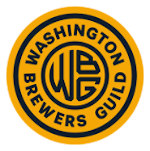More than 80% of total beer volume in the U.S. is sold at off-premise retailers–grocery stores, convenience stores, bottleshops, etc. However, about 70% of U.S. breweries sell more than 25% of their beer onsite at their own taprooms and pubs. This article is most valuable to those 70% of breweries. (Image above from the Brewers Association.)
The data nerds at the Brewers Association recently crunched some numbers provided by Arryved, a point-of-sale (POS) system utilized by over 2,000 craft producers nationwide. Arryved provides significant anonymized data revealing trends beneficial for business owners with onsite elements. The Brewers Association recently published the first part of a three-part series of articles examining sales trends using Arryved data. The first article focused on the draught-retail mix, item category breakdown, and average tab size, with future posts delving into item pricing and temporal sales trends.
The Brewers Association’s analysis used data from 555 locations with consistent beer sales data from January 2021 to March 2024, ensuring accuracy by excluding locations with irregular operations. “Top Performers,” locations with the highest positive change in gross sales from April 2022-March 2023 to April 2023-March 2024, were highlighted, showing increases from 15% to 97% and annual sales exceeding $100,000.
Below, we provide a summary, but if this kind of information interests you, we recommend you read the complete report.
Overview
Seasonal gross sales trends have remained stable since January 2021, with real terms sales slightly declining due to inflation. Generally, sales peak in July and dip in January. Real terms gross sales increased by 1% YoY from 2021-2022, decreased by 3% from 2022-2023, and dropped by 6% in the first quarter of 2023-2024.
Draught-Retail Mix
Draft sales are not necessarily pint sales. The draught share of total beer sales has increased steadily post-COVID-19, accounting for over 90% of beer sales since January 2022 and peaking at 94% in March 2024. Top Performers consistently had slightly higher draught shares (93-94%) since January 2021. The dataset includes growler and crowler fills in draught sales, meaning “draught” isn’t limited to onsite consumption.
Item Categories
Selling more non-beer. Beer sales have declined, while other categories like food and non-beer alcohol have grown significantly. Food’s share of gross sales rose from 15% in January 2021 to over 20% recently, a 128% increase. Non-beer alcohol sales tripled, growing from 5% to 9% category share. This shift indicates customers increasingly visit breweries for meals and diverse beverage options. The gross sales share of beer and merchandise declined, while non-alcoholic beverages remained stable. Category shares plateaued over the past year, indicating a potential new normal.
Average Tab Sizes and Discounts
More promotions and discounts means more sales. Average pre-tax discounted tab size has been rising since Fall 2021, with seasonal peaks around the holidays. Discounts also increased slightly, suggesting holiday promotions might attract higher-spending groups. Top Performers had nearly 10% higher average tab sizes and higher discounts, possibly indicating effective promotional strategies.
The next two articles in the series from the Brewers Association will explore pricing and temporal sales impacts.
You can read the Brewers Association’s original, complete article here.

































